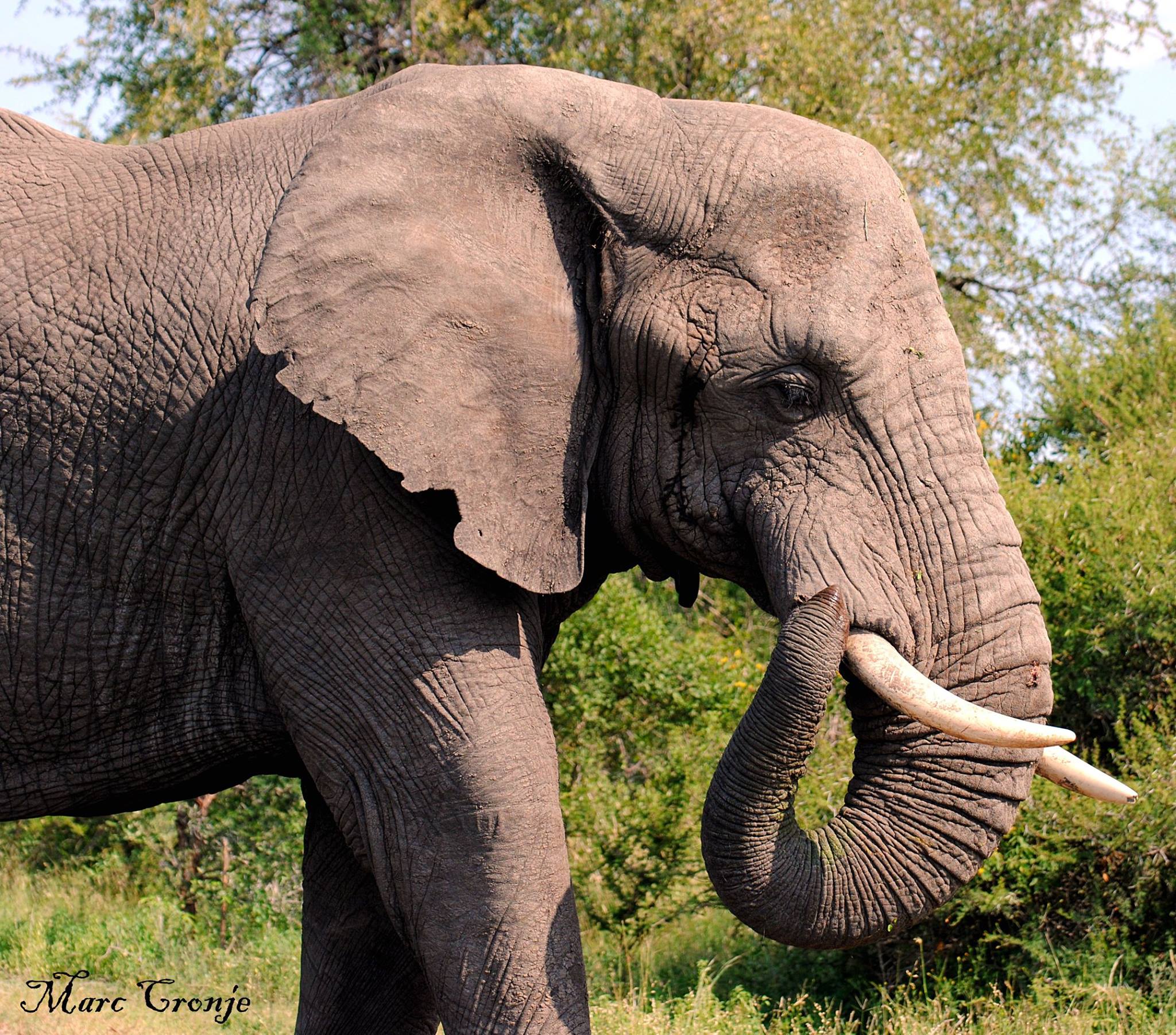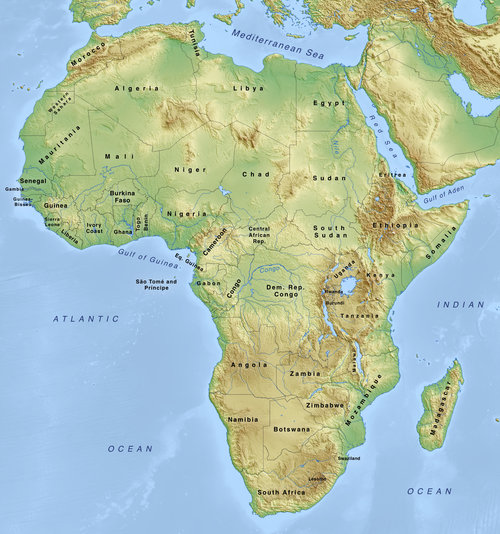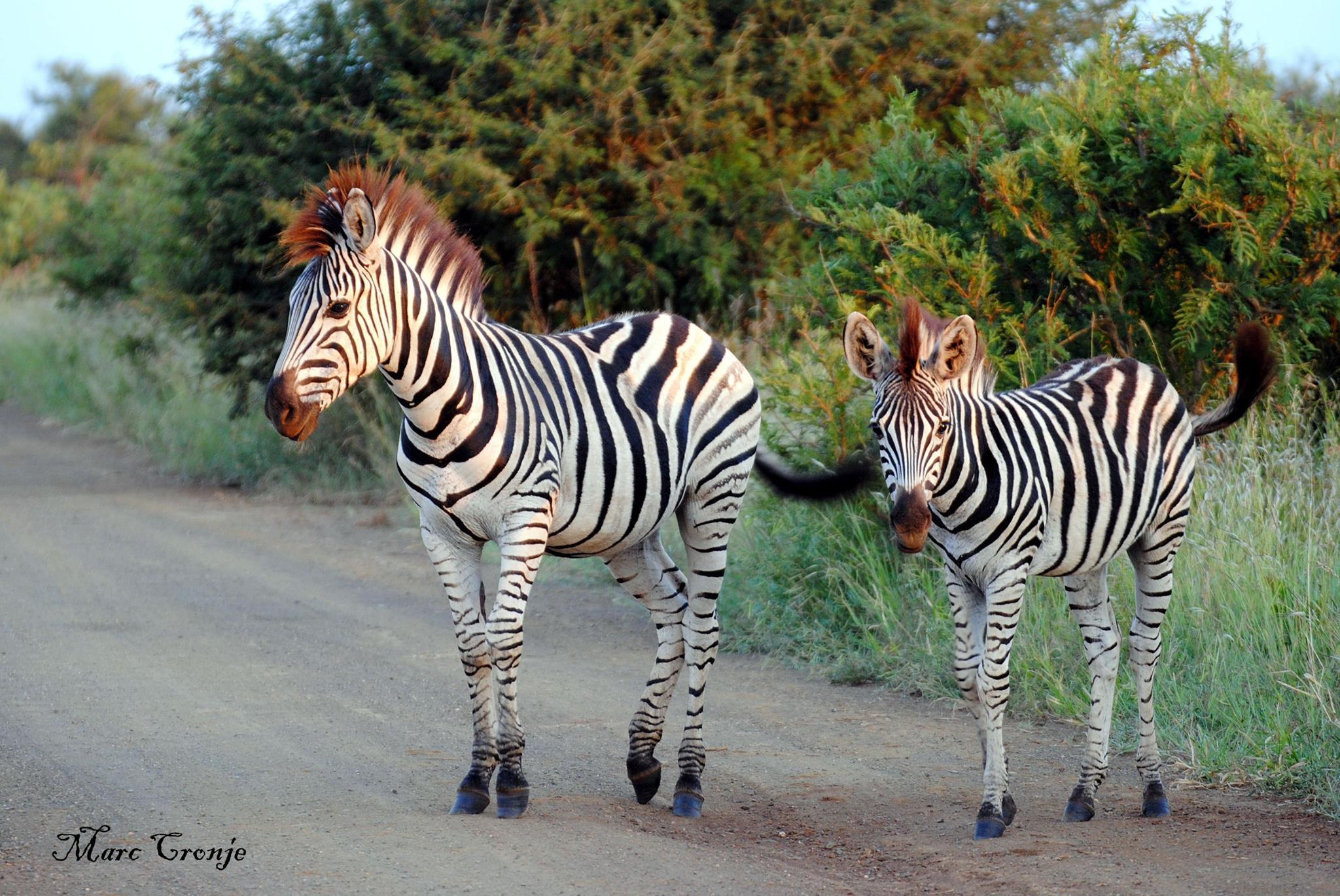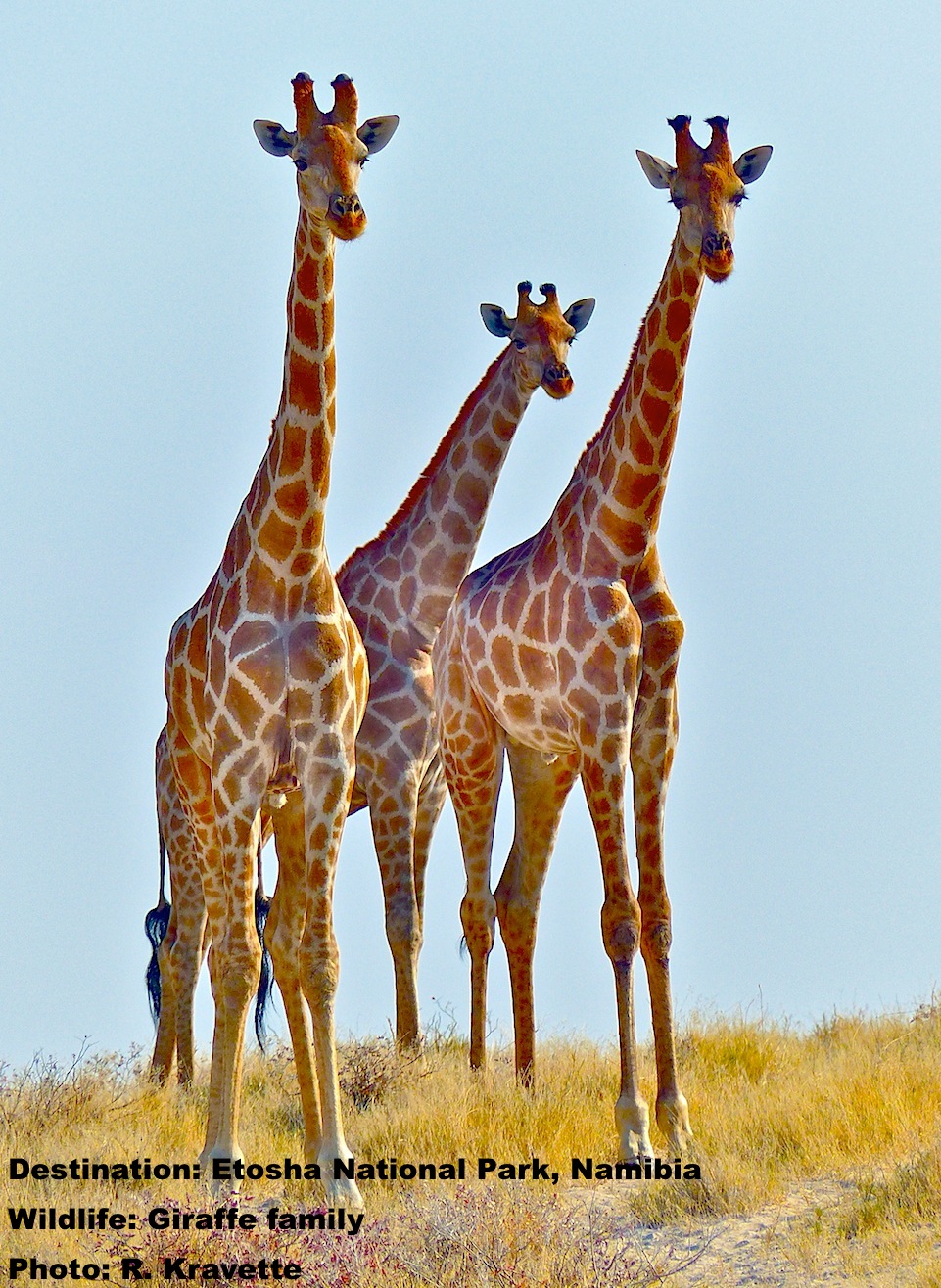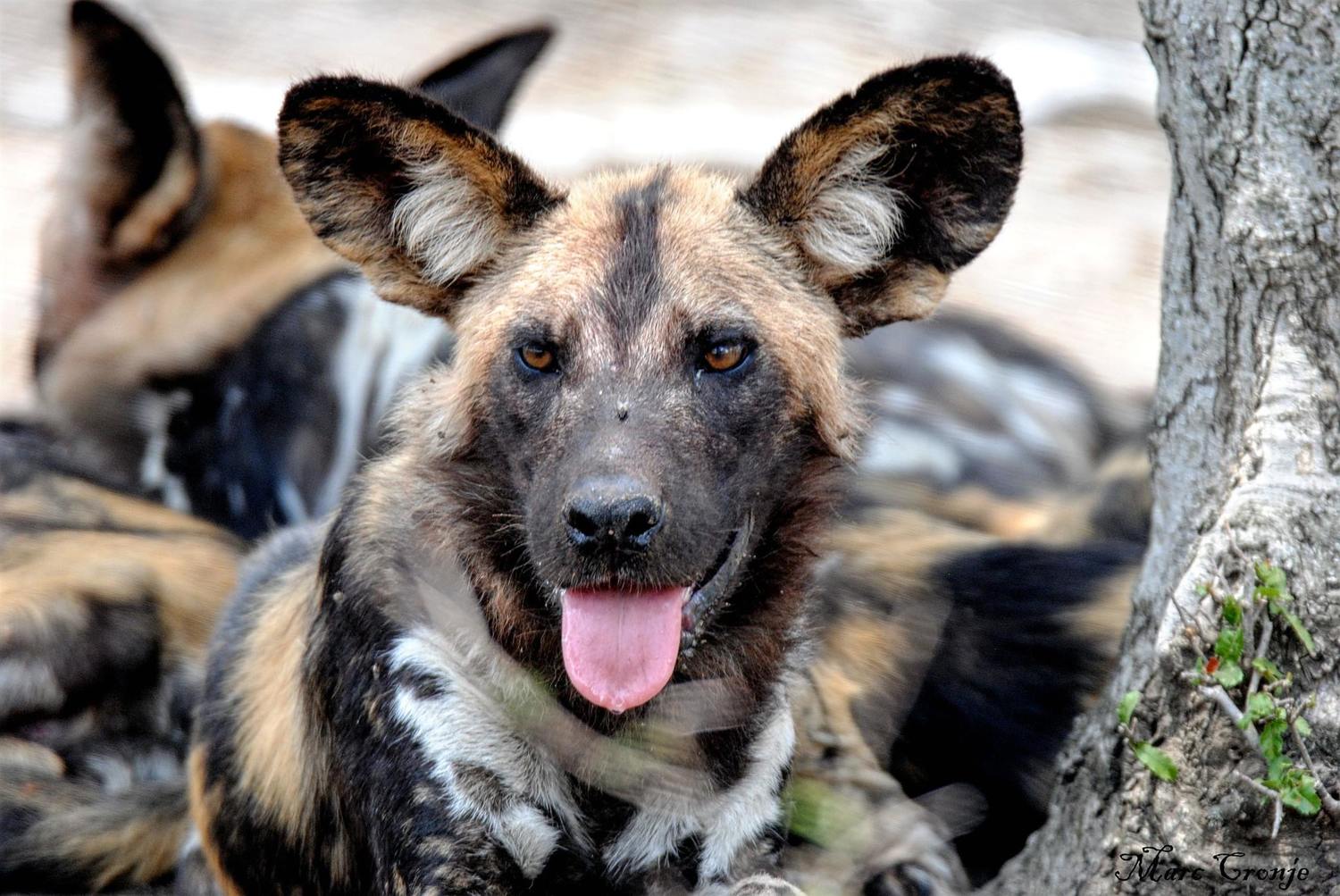Did you know?
Giraffe Fun Facts
1. Treasure bones: Giraffes find, pick up, suck and chew large bones, throwing back their heads, salivating profusely and seeming to enjoy their treat. When they are finished – or bored – they will simply drop them. The bones supply much-needed minerals such as phosphorous and calcium.
2. Splotches are like fingerprints: Each giraffe’s splotches are unique to that individual.
3. Hum if you don’t know the words: Long thought to be silent, scientists studying giraffes in zoos recently discovered that they produce low frequency vocalizations, similar to humming, to each other at night. And in the wild? No studies yet – but if you happen find yourself rough-camping with giraffes some evening, please make notes!
4. A Journey: A group of giraffes living together have a special name, like a "pride" of lion or a herd of cattle. Giraffe herds are called a "journey."
Sometimes Called
Each individual giraffe subspecies has a common name; many have more than one. For additional information see "More Information on Giraffe Subspecies" at the end of the article.
Relatively Speaking
IMPORTANT NOTE: The Giraffe Conservation Foundation recently (Sept 2016) announced the result of new genetic research that directly impacts the formerly accepted knowledge pertaining to Giraffe genus and species reflected in this article. Destination: Wildlife is presently confirming certain details with them and will update this article as soon as possible. The following information was updated 8/2018
Genus and Species
New research points to four giraffe species:
Giraffa camelopardalis: The Northern giraffe No, they’re not related to camels.
Giraffa reticulata: The Reticulated giraffe
Giraffe tippelskirchi: The Masai giraffe
Giraffa giraffa: The Southern giraffe
Giraffe Subspecies
Until 2016, The IUCN Red List (11/2015) and the Giraffe Conservation Foundation both listed one giraffe species and nine subspecies primarily defined by morphology (pattern, ossicone structure etc.) and geography. New DNA research points to the four (4) species listed above plus five (5) subspecies. See the end of the article for additional subspecies information.
Closest Living Relative
The endangered and declining okapi, Giraffe's Closest relative, are found only iIN the Democratic Republic of Congo's rainforest. This image was superimposed over a deciduous wooded background by the photographer. Image: ©Marclschauer Dreamstime. com
Although from the back an okapi, found only in the rainforests of the Democratic Republic of Congo (DRC), may remind you of a zebra, it is actually the giraffe’s closest relative. Both animals have a Venus valve (as do ostriches,) in their long necks to help circulate blood and note the ossicones. Neither zebras nor ostriches are related to giraffes. The Okapi are an IUCN assessed endangered species
By the Numbers
IUCN Red List
Giraffe's are assessed by the IUCN as Least Concern. However, the Rothchild's and Nigerian giraffe subspecies are assessed as Endangered.
Even more concerning is that the Nubian and Thornicroft's giraffes may be dwindling towards extinction, as each subspecies now appears to only number in the hundreds.
How Many Giraffes Are Left in the Wild
The horns, called ossicones, are made of cartilage not bone. They are not attached to the giraffe's skull. Image ©L. MEDLEY FOR DESTINATION: WILDLIFE
According to Giraffe Conservation (GC) there may be only 80,000 (all subspecies combined) individuals left in the wild – a loss of 40% in the last 15 years. The GC and the IUCN SSC Giraffe & Okapi Specialist Group are working together to review and update the present population figures. When the study is complete the Least Concern assessment may be revised.
Conservation Notes
Habitat loss, habitat fragmentation, poaching and ultimately human population growth have already caused extinction in seven of the giraffe’s former range countries. In others, armed conflicts make it difficut to determine population levels however, in South Sudan recent research has actually reveled more giraffes than previously thought. The ICUN labeled the over-all population trend as “declining” even in certain areas where they were recently thought to be stable. The Giraffe Conservation Foundation, in collaboration with the IUCN SSC Giraffe & Okapi Specialist Group, is currently assessing giraffes as a species and all nine subspecies. These assessments will be submitted to the IUCN early next year.
A giraffe's heart can weigh up to 25 pounds (11 kilograms.) They have a special system of valves to regulate blood pressure especially necessary when they bend to drink. ©L. MEDLEY FOR DESTINATION: WILDLIFE
Encouraging News
The success of the second World Giraffe Day, held on 21 June 2015 (the longest day or night, depending which hemisphere you are on) has helped increase awareness for the giraffe’s plight. Global celebration events raised money for Operation Twiga, a collaborative effort of the GCF and the Uganda Wildlife Authority to reintroduce endangered Rothschild’s giraffes into their historic range in Uganda. In August 2015, the Giraffe Indaba III was held at the Southern African Wildlife College in South Africa. Hosted by the Giraffe Conservation Foundation and the IUCN SSC Giraffe and Okapi Specialist Group, this conference brought together giraffe experts from all over the world. Together, researchers, wildlife managers, and conservationists discussed conservation issues and techniques. and further steps toward identifying species and subspecies.
Identify Me
Giraffes are naturally curious. Be very quiet when watching giraffes in the wild, even in your car. Wait and be patient. You may find the giraffes come over to watch you. Image: ©R.Kravette for Destination: wildlife
Size
Adult Weight: Up to 4,000 pounds (1800 kg)
Adult Height: Up to 19 feet (5.80 m)
Distinguishing Characteristics
The tallest land mammal and heaviest ruminant, giraffes have small heads atop long legs and necks. Their blood pressure is about double that of other mammals in order to pump blood all the way up, and they ‘wear’ a very tight covering of skin on their legs. This holds the giraffe’s leg in the same way that your elastic stocking or a pilot’s g-suite would and helps keep the capillaries healthy even with all that extra pressure. Their hearts are extra large and can weigh up to 24.25 pounds (11 kg), but they have the same number of neck vertebrae that humans have, of course a single giraffe vertebrae can be over 10 inches (25 cm) long!
Horns: Both males and females have horns called ossicones made from cartilage not bone. Commonly two are visible, however, each giraffes can have multiple but less pronounced ossicones. topped by coarse dark hair. Males’ ossicones can be almost “bald” from fighting.
Coloring: All giraffes are covered in large polygon-shaped patches, in colors ranging from rusty-grey to bright orange on a sandy-beige to white background. Long flirty lashes protect their eyes from thorns and the ants that live in acacia trees. Giraffe tails can grow to over eight feet!
See the end of the article for additional subspecies information.
Understanding Giraffes
New born giraffes are up on wobbly legs minutes after being born, but in many populations, only 50% will survive to adulthood.
Giraffe Life Cycle
Females give birth after a 15-month gestation period.. The calf drops from a height of about 6.5 feet (2 m) with usually no more damage than a kick-start to its lungs. The baby is born with ossicones that are not attached yet to its skull, so there is no injury at birth. They are up on wobbly legs fast and running a day later, but within a month 20% may be been taken by predators or disease. In some populations only 50% will survive their first year. The ones that survive will nurse for 9 to 12 months, doubling their height at the same time. Giraffes are mature at eight years. They are thought to live about 25 years in the wild.
Giraffe's favorite food is acacia leaves. but this treat comes with huge thorns, easily visible here. Image © R. Kravette for Destination: Wildlife.
On the Menu
Giraffes are browsers and will eat leaves, shoots and buds on trees and shrubs. They also eat small amounts of grass but prefer flowers and fruit.
Giraffes eat 65 - 90 pounds (35 - 40 kg) of browse per day. The vast majority of their food is acacia leaves, Acacia trees are thorny and giraffes use their long - over 18 inches - blue-black tongues and thick mouths to protect against the thorns, spitting out any that get in their way. Males browse at treetops, females a bit lower.
Nature's Web: In an interesting symbiotic relationship, browsing by giraffes stimulates new acacia shoots, and digestion then elimination by giraffes helps disperse and germinate acacia seeds. Giraffes may also help with pollination.
Giraffes will drink often where water is plentiful, however in the more arid part of their range, for example northern Namibia, they get most of their moisture from the coastal fog that gathers on leaves. To drink they splay or bend their front legs to reach down to the water. They can only drink for a few quick minutes at a time. Between drinks they pop their heads up fast giving a little jump.
What Are They Doing?
Giraffes are social animals. Mixed gender herds travel together but bachelor herds and solo-living older males are also common. Giraffe herds have ranges that are shared with other herds rather than specific defended territories, but males do compete against each other for dominance and mating opportunities.
Giraffes browsing among the acacias. Look for taller males feeding on the very tops of the trees. Image: © R. Kravette for Destination: Wildlife Destination: Palmwag Concession, Namibia
They will “neck” or wrap their necks around each other to determine strength and occasionally resort to pounding each other with their skulls and ossicones. This can knock their opponent down or even kill it.
To rest, giraffes fold their legs underneath themselves, keeping their heads up or lying along their backs.
Habitat and Range
Giraffes live in open savanna with tall trees, woodlands and scrublands. Once they roamed in abundance over the south, west and the east-central African continent,. Today, although their habitat is fragmented and their numbers have declined precipitously, you will still find them not only in preserved land and parks in most of sub-Saharan Africa, but also in communal land in Namibia, Niger, South Sudan, Ethiopia and Zimbabwe. And in large areas of communal lands, too, for example in Ethiopia, Namibia, Niger, South Sudan and Zimbabwe.
Enemies and Threats
Long legs and speed generally make giraffes a difficult meal for a predator. Lions [9] and to a lesser extent, leopards, are an adult’s only real natural enemy. Very young giraffes who need a lot of lying down time are a different story; they are relatively easy prey for lions, hyenas, leopards, cheetahs and wild dogs. Overall, the greatest threat to the species comes in a human form[10]. Habitat loss and habitat fragmentation has severely impacted all giraffe populations. In their central and north-eastern ranges civil unrest and war [12]have exasperated the problem.
A Personal Note
A hard-packed, unpaved road in South Africa’s Kgaligadi Trans-Frontier Park wound to a fork. Overgrown, rutted, and nearly indistinguishable from the landscape, it looked like no one had been on it in months. THIS we could not pass up!
The wildebeest was not in a mood to share. the Orex in the background stayed a good distance away. Image © R. Kravette for Destination: Wildlife
Tire testing twists and jolts brought us to a watering hole deserted except for a zillion bright yellow canaries flitting, in little groups of threes and fours, from acacia tree to the sandy bank and then back up again.
They cocked their little heads in greeting, chirping exuberantly between tiny sips of water then suddenly lifting up again, en masse, tiny yellow blurs landing deftly between the acacia thorns.
A lone male wildebeest stood at the far bank quenching his thirst. His broad back seemed to soak in high noon’s full fury. There was no shade at the water and no water under the shade. The wildebeest did not look amused. A bunch of red headed finches landed among the canaries. We settled in to watch the avian ballet.
After a while a small giraffe herd appeared from over the ridge. Big powerful male (a bull), two females (called “cows”) and a yearling loped toward the water. Females and baby lined up at the water’s edge, splayed their legs and drank. The big male held back, watching. Wildebeest looked up, clearly annoyed at the intrusion, and trotted back to the tree line, then turned back toward the family and stood, watching.
After the wildebeest retreated the youngster drank peacefully. Note the splayed legs. Giraffes give a little hop to stand up. © R. Kravette for Destination: Wildlife
I suppose the wildebeest thought about it and decided he didn’t want these guys in his neighborhood because minutes later, in a burst of machismo, he lowered his head and charged full-out, halting in a spray of dust and pebbles just feet away from the startled giraffe child. Not to worry, our gallant bull was watching. Unperturbed, he strode over – all 18 feet of him – parking his long powerful legs squarely between calf and ‘beest, sharp hooves a kick away from wildebeest nose. The big male stamped once. A grey/white cloud puffed up encircling the wildebeest, then settled again into absolute stillness. Nothing moved – not even the birds. A few minutes passed. The two males stood their ground. The big giraffe shifted a little, as though he might again raise his leg. Wildebeest must have reconsidered the necessity of making a stand on this particular day. Instead, he turned and walked, a dignified old ‘beest, across the clearing into the tree line. The giraffe child drank.
Where to See Giraffes
Etosha National Park's famous Okaukuejo water hole is flood lit at night. settle in on one of the comfortably placed benches to watch night-active giraffe herds come for their evening drink. Image: ©L. Medley for Destination: WIldlife
Namibia: Etosha National Park
Namibia has one of the only growing populations of giraffes on the continent. In Etosha’s protected and open country, full of the acacias they love, giraffes are (relatively) relaxed and very easy to spot. Go in Namibia’s winter months! Don’t miss Okaukuejo water hole where you can sit safely but very closely day or night (its floodlit after dark) and watch the show. Perfect for families.
Wildlife Bonus: Savanna elephant, lion, cheetah, black rhino, white rhino, spotted hyena, zebra, gemsbok, springbok, kudu and wart hog.
South Africa: Kruger National Park
Kruger has an amazing abundance of wildlife. Spend time at water holes to watch their amazing drinking technique. Don’t miss the little “hop” at the end.
Wildlife Bonus: Savanna elephant, white rhino, lion, leopard, spotted hyena, and painted dog.
The Road Less Traveled
Uganda: Murchison Falls National Park
Uganda's much storied Murchison Falls National Park is home to WHAT WAS PREVIOUSLY THOUGHT TO BE the Rothchild's giraffe, NOW THE NORTHERN GIRAFFE SPECIES. Image Julian Fennesy thanks to Giraffe Conservation Foundation.
Bisected by the Nile River and one of the oldest national parks in Uganda; it was a favorite of Churchill, Hemingway, and Theodore Roosevelt. Today it is home to the one of the last remaining natural populations of Rothschild’s giraffes.
Wildlife Bonus: Buffalo, lion, elephant, and hippopotamus as well as crocodile, blue monkeys and red-tailed monkeys,[15] and the rare patas monkey. Look for the shoebill stork and grey crowned crane, Uganda’s national bird.
Nylsvley Nature Reserve, South Africa: This is a very different experience from the traditional in-vehicle safari, here you will walk through a bird sanctuary meeting these giants on their own ground, completely unlike viewing them through a car window.
Wildlife Bonus: 370 bird species. It is home to 80,000 water birds. Mammals include the endangered roan antelope, tsessbe and wildebeest, six species of mongoose, leopard, serval, two genet species, and honey badger.
See more viewing destinations and ideas and fabulous images below in "More on Giraffe Sub-Species"
Smart Viewing
Preparing for Your Giraffe Adventure
It is amazing how an animal that big can blend into his environment so completely. Look in among the acacia trees they love or spot a face above them; males graze right at the treetop. Watch along the horizon line where they might walk in line looking like so many construction cranes silhouetted against the sky. Males sometimes live solo. We almost missed our first giraffe, a big male, sitting alone at the side of the road resting.
Giraffes splay their legs wide apart to reach down to the water. They’ll drink for only a few minutes at a time. Look for the little “hop” they give to stand up again. This process can repeat many times in one session.
Be a Responsible Wildlife Traveler
Giraffes are shy but curious animals. In areas they are known to live, position your self (in your vehicle) quietly by a water hole and wait. Keep the engine turned off and be quiet, giraffes spook easily. As with most wildlife, they can appear without warning, the quieter and more still you are, the more you will witness.
More on Giraffe Species and Sub-Species
Until recently scientists believed that there was one (1) species and nine (9) subspecies of giraffe. New research is pointing to four distinct giraffe species and There is presently one accepted giraffe species and four subspecies. although until recently there were thought to be nine. Research is ongoing, and, for a non-scientist, the multitude of conflicting ideas and theories can be confusing. One thing is certain: Giraffes are amazing animals. We thank the Giraffe Conservation for use of their images, and for fact checking, additional information, and much help in bringing clarity to our understanding of these wonderful animals. And mostly, we thank them for their invaluable work to save this species. (Updated 8-2018)
Species: Northern Giraffe: G. camelopardis
The Northern giraffe has three (3) subspecies
Nubian Giraffe: G.c camelopardalis
Nubian giraffes in Gambella National Park, Ethiopia. The Nubian subspecies lives in some of Africa's most unstable regions. Image: ©Ludwig Seige thanks to Giraffe Conservation Foundation.
IUCN: Not assessed.
Description: The distinctive coat of the Nubian giraffe has large, normally four-sided, chestnut brown spots set against a slightly off-white background with no markings on the inside of its legs or below the hocks (knees).
Present Range: According to the Giraffe Conservation Foundation, there is an estimated 650 Nubian giraffes left in the wild : 200 or so in western Ethiopia and possibly up to 400 in South Sudan.
Possible Viewing Destination: Gambella National Park, Ethiopia. Gambella N.P. is not completely secure. It is not advisable to visit at this time.
A herd ofWHAT WAS CALLED Rothchild's giraffe WHEN THIS IMAGE WAS TAKEN in Murchison Falls, Uganda. Image Julian Fennesy with thanks to Giraffe Conservation Foundation.
What was once called the Rothschilds Giraffe is now considered to be a Nubian giraffe
Sometimes Called: What was once considered to be the Rothschilds giraffe was sometimes also called Ugandan or Baringo giraffe
Description: Look for their white un-patterned legs, large, dark rectangular shaped spots or blotches set irregularly against a cream colored background. Note: This subspecies can have up to 5 ossicones.
Present Range: they are best found now in Uganda
Possible Viewing Destination: Kidepo Valley National Park, Uganda. Also Murchison Falls see above.
Bonus Wildlife: Lion, elephant, cheetah, Cape buffalo, Burchell’s zebra, Jackson’s hartebeest, and 475 bird species.
Kordofan Giraffe: G.c antiquorum
Camaroon's Waza National Park was named a UNESCO Biospere Reserve due to its amazing biodiversity, including these Kordofan giraffes. Image: ©M.Schoe with thanks to Giraffe Conservation Foundation.
IUCN: Not assessed.
Description: Their soft patterns extend down their inner and outer legs stopping at the knee.
Present Range: Their historic range included southern Chad, the Central African Republic, northern Cameroon and northern Democratic Republic of Congo (DRC). As of 2007 there were 65 in zoos and approximately 2,000 in the wild.
Possible Viewing Destination: Waza National Park, Cameroon. This small country is home to over 275 different cultures and nature so diverse that Waza National Park was named a UNESCO Biosphere Reserve.
Bonus WIldlife: Elephant, Lion, Cape buffalo, many antelope species, and ostrich.
West African Giraffe: G.c peralta
The endangered West African giraffes live outside of protected areas near villages close to Niger's capitol city of Niamey. Image: ©Andy Tutchings with thanks to Giraffe Conservation Foundation.
Sometimes Called: Nigerian giraffe
IUCN: Endangered.
Description: Strikingly light in appearance with tan colored, rectangular spots set amongst thick creamy lines.
Present Range: Possibly the world’s rarest giraffe, fewer than 400 individuals survive in an isolated pocket east of Niger’s capital city. With help and protection from the Niger government, their numbers are up from about 50 in the 1990’s.
Possible Viewing Destination: East of Niamey, Niger. The giraffes live east of the capitol city of Niamey in unprotected land among the villagers. Although Park W, a national a UNESCO World Heritage Site is near (and spans three country’s borders), the giraffes live in the transitional zone outside of it on the Niger side.
Species: Reticulated Giraffe: G.reticulata
Reticulated Giraffe in Samuru National Park, Kenya. Image ©Julian Fennesy with thanks to Giraffe Conservation Foundation.
There are no known subspecies according to the most recent research.
Sometimes Called: Somali or nettled giraffe
IUCN: Not assessed.
Description: Crisp, burnt orange polygons with thin white borders all the way down their legs.
Present Range: Reduced by over 80% in the past few decades, it is now rare and possibly extinct through much of their range of Somalia and Ethiopia. Northeast Kenya is also part of their range. At most there are 8,000 in the wild.
Possible Viewing Destination: The Ol Pejeta Conservancy in the Laikpia region of Kenya.
Bonus Wildlife: Many endangered species including: black rhino, white rhino, Grevy’s zebra, African painted dog/wild dog, cheetah, and lion.
Species: Masai Giraffe: G.tippelskirchi
Serengeti National Park, Tanzania is home to the Masai giraffe as well as the location of the great wildebeest migration Image: ©Megan Strauss with thanks to the Giraffe Conservation Foundation
There are no known subspecies according to the most recent research
Sometimes Called: Kilimanjaro giraffe
IUCN: Not assessed.
Description: Their coloring is noticeably darker than other species/subspecies with large, distinctive, dark brown, vine-leaf shaped, jagged spots interspersed by creamy-brown irregular lines.
Present Range: Most abundant of all the subspecies with about 36,000 individuals; however this is only 50% of their total a decade ago. They can be seen in central to southern Kenya and Tanzania. There are approximately 100 in zoos.
Possible Viewing Destination: The Maasai Mara National Reserve, Kenya and Serengeti, Tanzania.
Wildlife Bonus: These are the regions of the Great Wildebeest Migration. Virtually all of Africa's plains animals will be on display.
what was once called the Thornicroft's Giraffe might be seen in Zambia's South Luanga National Park. Image: Julie Maher with thanks to Giraffe Conservation Foundation.
The Thornicroft’s Giraffe, G.c thornicrofti is now considered to be part of the species Masai G.c tippelskirchi
Sometimes Called: What was once considered to be the Thornicroft's goraffe was also called the Rhodesian giraffe
Description: They have dark leaf or star shaped patches with ragged edges.
Present Range: Fewer than 550 individuals survive as an entirely isolated population restricted to eastern Zambia’s South Luangwa Valley. There are none in captivity.
Possible Viewing Destination: South Luangwa National Park, Zambia. Possibly home of the first-ever walking safari, this fabulous opportunity is still offered.
Bonus Wildlife: Elephant, leopard, zebra, hippopotamus, 14 antelope species, and over 400 bird species.
Species: The Southern Giraffe: G. giraffa
The South African Giraffe: G.c giraffa
Giraffes rest or sleep for short amounts of time sitting with their legs folded under themselves. Image: Roberta Kravette for Destination: Wildlife
Sometimes Called: Cape giraffe
IUCN: Not assessed
Description: Their coloring is soft and not as crisp as some other subspecies. They have pattern all the way to their hooves.
Present Range: South Africa, Botswana, Namibia, Zimbabwe, and now being reintroduced into Mozambique. Numbers are dwindling but there are possibly 17,000 remaining in the wild and 45 in zoos.
Possible Viewing Destination: Kgalagadi Transfrontier Park, South Africa.
Bonus Wildlife: Brown hyena, cheetah, wildebeest, hartebeest, springbok, meerkat, mongoose.
Angolan Giraffe: G. c. angolensis.
Look for light or smokey color large notched patches on Angolan giraffes. Twin calves are very unusual for giraffes. When they do occur, usually only one will survive. This is a good mama. Image: ©Julian Fennessy with thanks to Giraffe Conservation Foundation
Sometimes Called: Smokey giraffe
IUCN: Not assessed
Description: These giraffes are light or “smoky” in color with large notched patchesPresent Range: Namibia, Central Botswana and possibly Western Zambia. “Angolan” giraffes are extinct in Angola[21]. There are about 15,000 in the wild and 20 in zoos.
Possible Viewing Destination: Etosha National Park, Namibia.
Bonus Wildlife: Black rhino, elephant, plains and mountain zebra, lion, leopard, kudu, springbok, gemsbok (Orex), dik dik, and warthogs.
Have you seen or Do you Want to see Giraffes? Put My Adventure with Giraffes in the subject line
MORE
Special Thanks
Giraffe Conservation Foundation For their assistance and fact checking.
Responsible wildlife tourism can bring economic benefit to areas where the giraffe still lives. Let's be part of the solution: Visit the giraffes. The experience will be life changing for both of you. Destination: Palmwag Concession, Damaraland, Namibia (mosquito free - family friendly) Image: ©L. Medley


